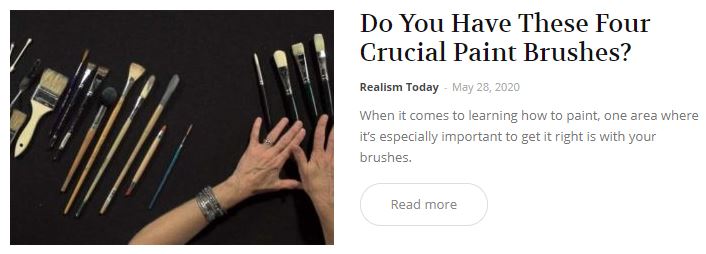Let’s talk a little about something you might find fairly mundane; paint brushes, brush care, cleaning a brush washer, and maybe a bit more interesting, how I choose my brushes and utilize them in my work.
Caring for Your Brushes: A Cheapskate’s Guide
BY DUSTIN VAN WECHEL
As far as I’m concerned, brushes for the painter are a very personal tool. Their physical attributes and how an artist employs them in their paintings plays an enormous roll in helping to define the visual style of the artist’s work.
When I was in college, my commercial illustration instructor once said; “Style is really just the extent to which an artist can draw.” To a degree I believe that’s true, but over the years of my professional career, I’ve come to find that statement a bit too narrow. An artist’s style is not only the extent to which he or she can draw, but is also the product of the tools they choose and the creative ways in which they decide to make use of them.
With this in mind, our choice of brushes should be carefully considered and our care for them tailored toward extending their life for as long as possible — who wants to unnecessarily be buying replacement brushes because one didn’t give them the proper care? Not me. I’m a cheapskate.
Paint Brush Care
If the artist is diligent about the care of their brushes, they can expect to get a lot of paintings out of them. My first rule in the care of my brushes is to never, under any circumstances, leave them in a cleaning solvent such as mineral spirits. VOCs in particular are very hard on brushes. Leaving your brushes sitting in thinner over the course of a painting will chemically burn the hairs and drastically shorten the lifespan of the brush.
To avoid this, I’ll switch to a clean, fresh brush for every major value change and color that falls outside of ninety degrees on the color wheel. I only wipe the brushes during the painting process and leave the actual cleaning of them until the end of a day’s painting session.
When I do clean my brushes at the end of the day, I first begin by wiping out as much paint from them as I can — always being careful to wipe with the direction of the hairs. Then I will swish them in mineral spirits for, at most, 10 seconds. I then wipe out the excess solvent from the brushes.
Once I’ve finished that initial cleaning, I go to my utility sink and give each brush a thorough, additional cleaning with a very mild hand soap. I then rinse each brush free of soap and set them out to dry overnight. I find that if my brushes start losing their shape, I can apply a very thin coat of hand soap to my fingers and run them over the hairs, restoring the shape of the brush.
Restoring the Brush Washer
I’ve always used Holbein brush washers. Reliably, they don’t leak when traveling and painting in plein air. But I believe Holbein has stopped making them, so I’ve employed a few tactics to keep mine in working order and extend its life for as long as possible.
First, I make sure to empty what I call the “sludge-puck” at the bottom of the washer after I notice it’s getting built up enough to start intruding on the brush agitator in the canister. This usually occurs after a few months of painting.
I do this by allowing the pigment to settle overnight and then draining off the mineral spirits into a temporary container. I then shake out the bottom sludge into a glass jar (once those are full I haul them off to my local hazardous waste disposal location) and wipe out what’s left at the bottom of the washer with a paper towel.
This process has kept the interior of the washer in relatively good condition. That being said, paint pigment still builds up both on the upper interior, the agitator, and the exterior. If this has occurred with your brush washer, I found soaking the entire washer (but not the lid gasket) in white vinegar for at least 24 hours will loosen all of the built-up pigment and allow you to wipe or scrape it off, returning the brush washer to nearly-new condition.
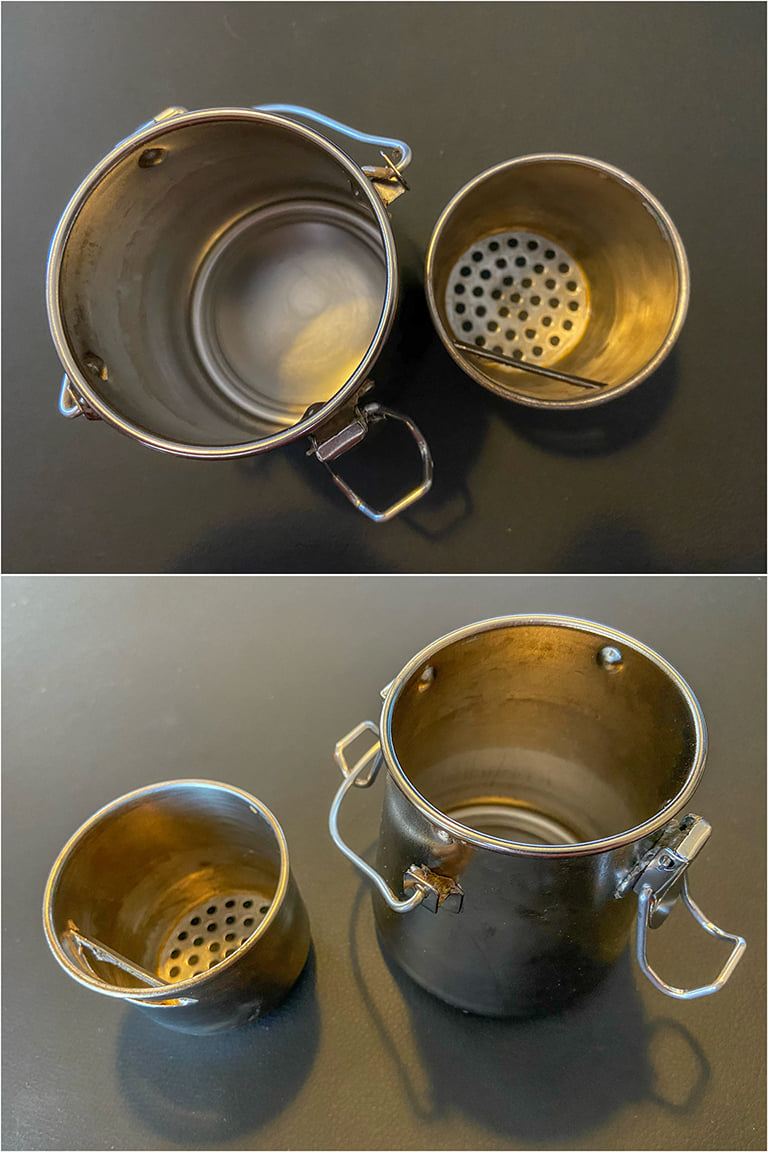
My Brushes
Because I enjoy putting as much paint texture into my work as I’m able to — an important attribute of my style — I like brushes that can hold a lot of paint. The brushes I use most are hog hair or a synthetic blend, bristle flat brushes. The sizes range from number 2 to 12.
In fact, I use flats for everything except the tiniest detail; like a highlight in an eye or signing the painting. I find I can get sharp edges with them, very large broad strokes and even a fair amount of detail using the corners.
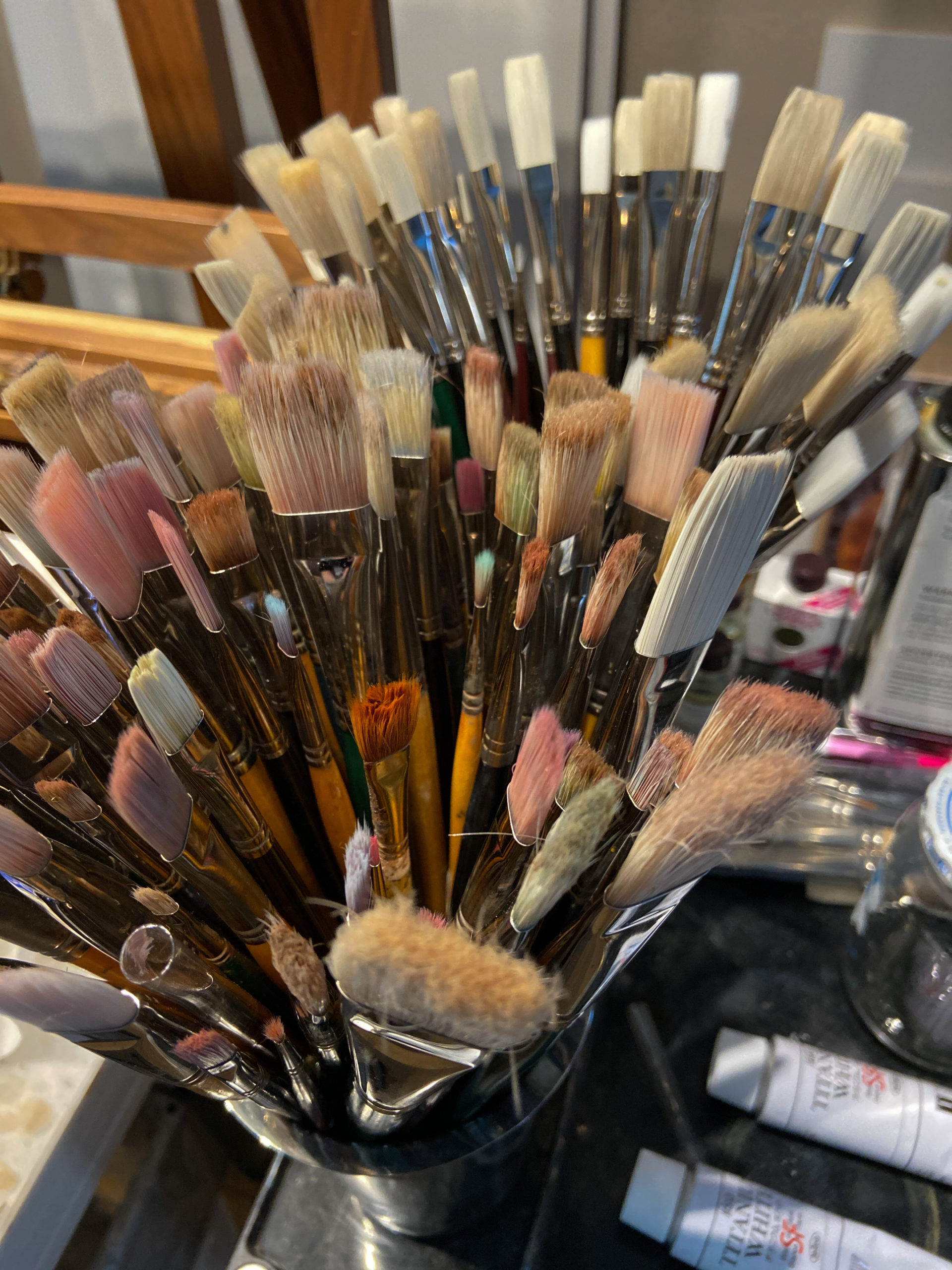
You can see in the image above that I have a canister full of unused, new brushes and a canister of the brushes currently being used. As brushes age and become stiff or frayed, I’ll just pull a replacement from my stash of new brushes. I make sure I always have an inventory of new brushes so that when this transition needs to occur, my painting time isn’t interrupted.
You may also notice there are other flat brushes — softer synthetic brushes and even one sable. I use the sable for softening edges. That brush has never even been loaded with paint.
The synthetics are used during the second phase of my painting process where, after the initial block-in, I try to be more precise with the value transitions, color and color temperatures, and overall detailing of the painting. They tend to get used where they are texturally appropriate — softer brushes for representing softer textures.
At the end, I will dry brush (the process of applying paint with a dry brush over dry paint) using the bristle flats as well as adding a lot of knife work — which you can see in the detail images of “Rocky Mountain Royalty” (below).
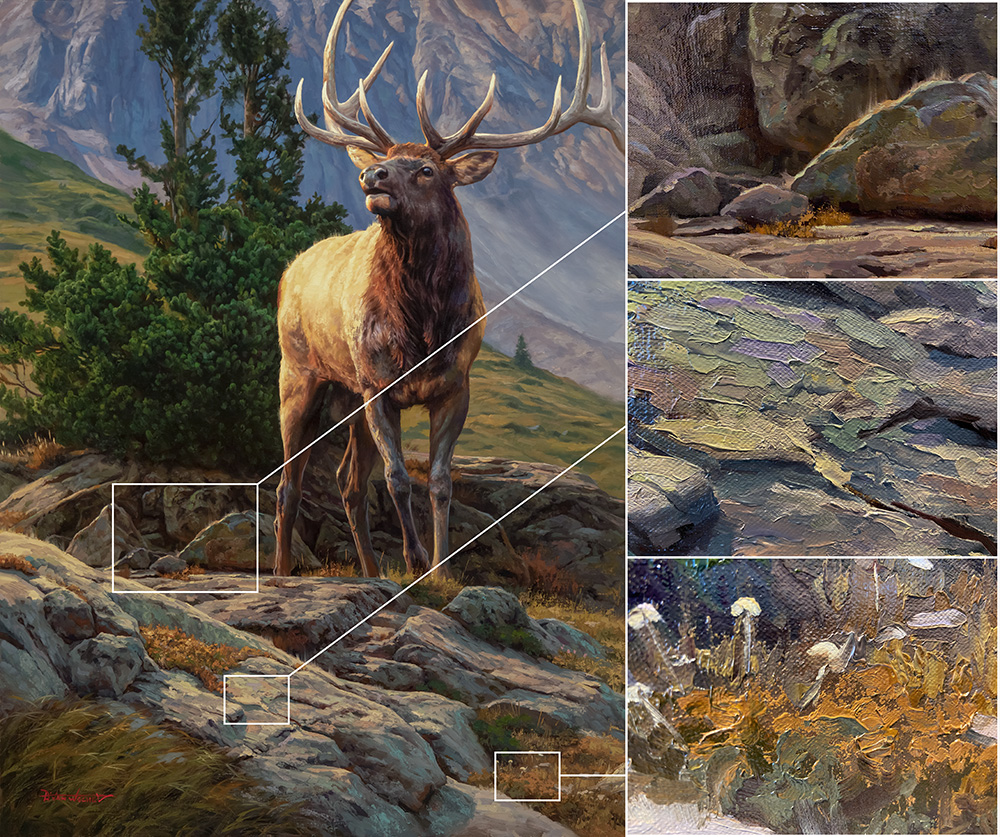
In closing, choose your paint brushes for what best suites what you’re looking to achieve in your work and experiment with lots of different brushes if you’re unsure of what might work best for you. Being diligent with your cleaning will ensure that your brushes enjoy a long life and save you lots of money — if you’re a cheapskate like me.
Contemporary Realism Wildlife Paintings by Dustin Van Wechel:
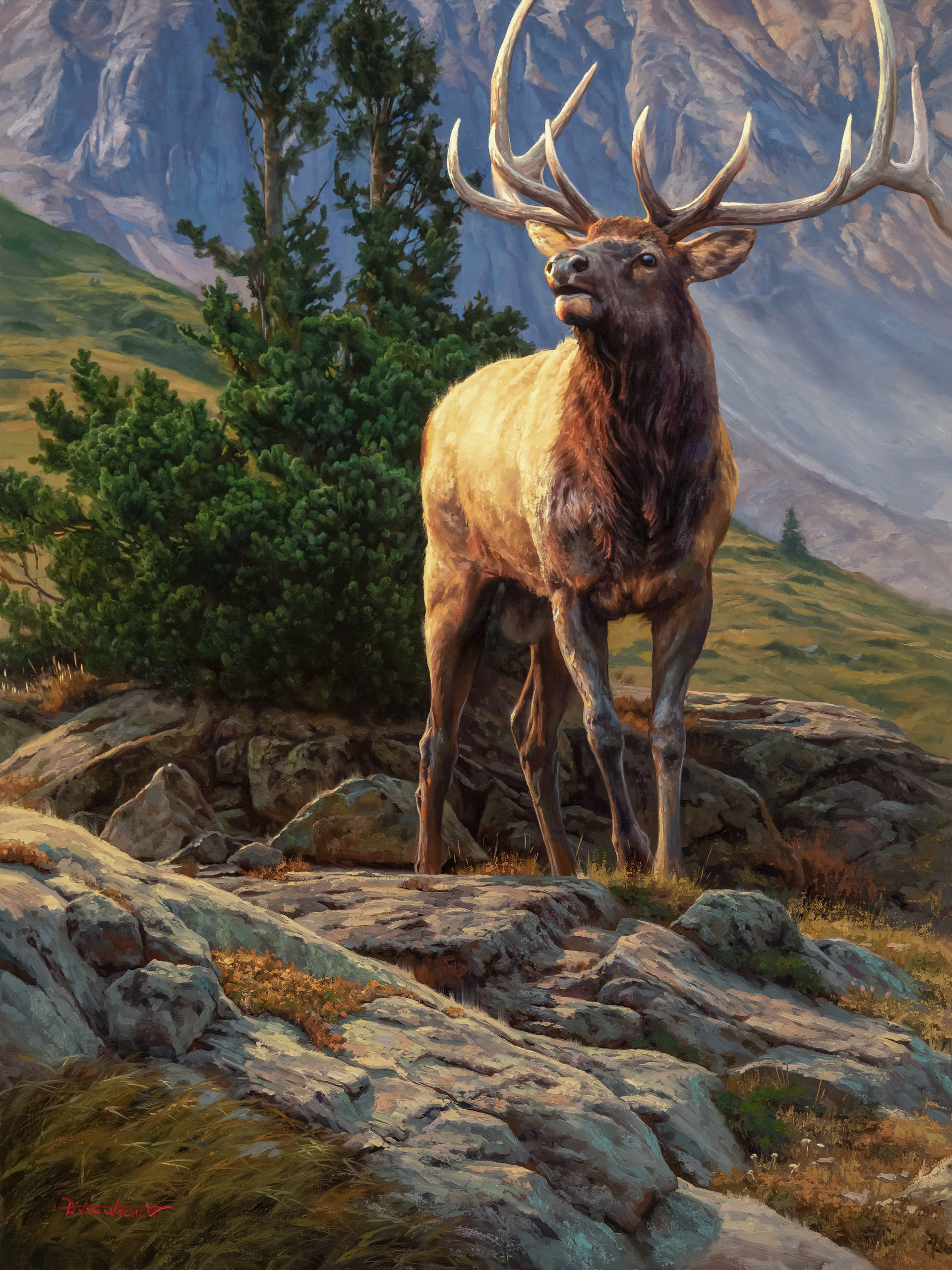

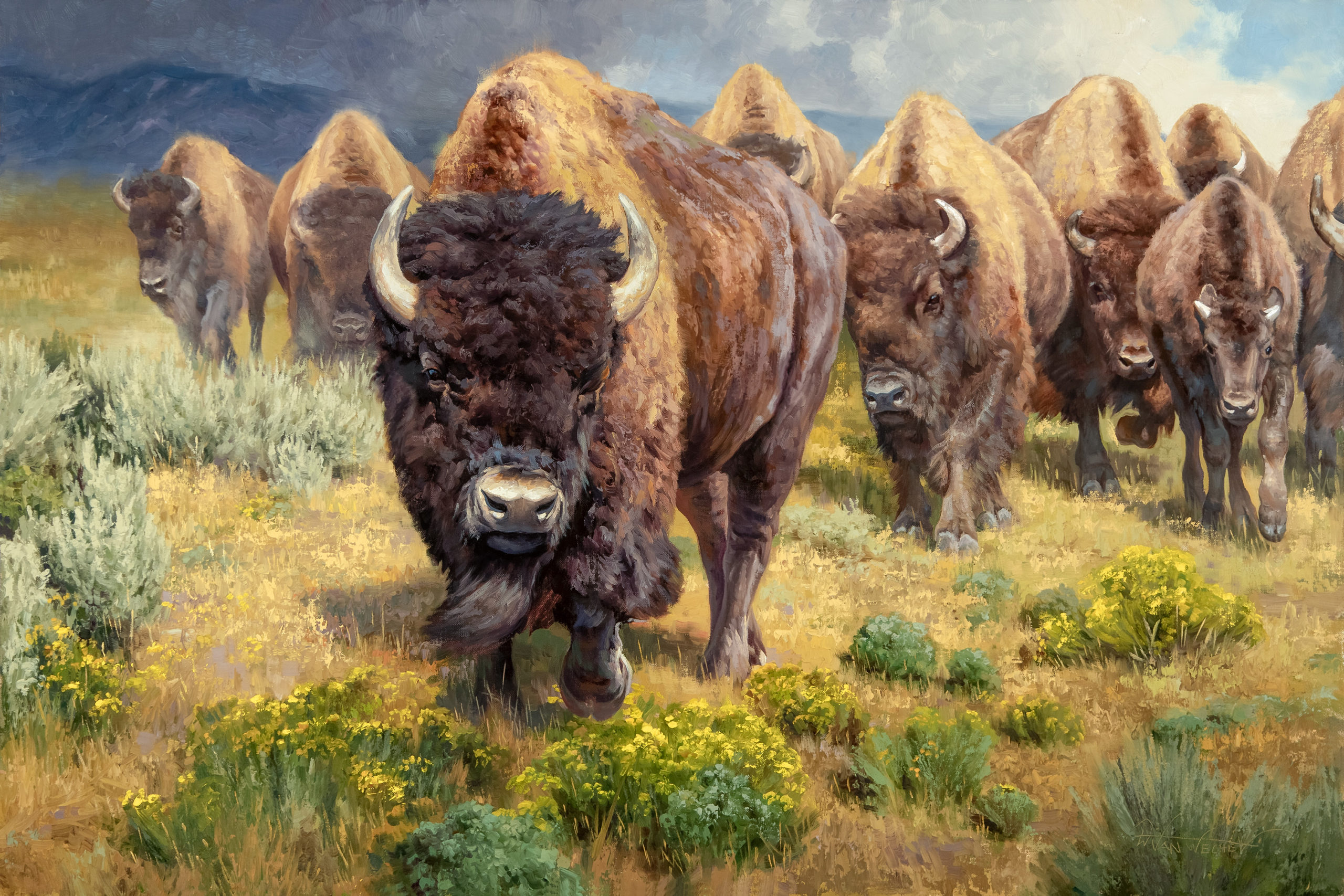

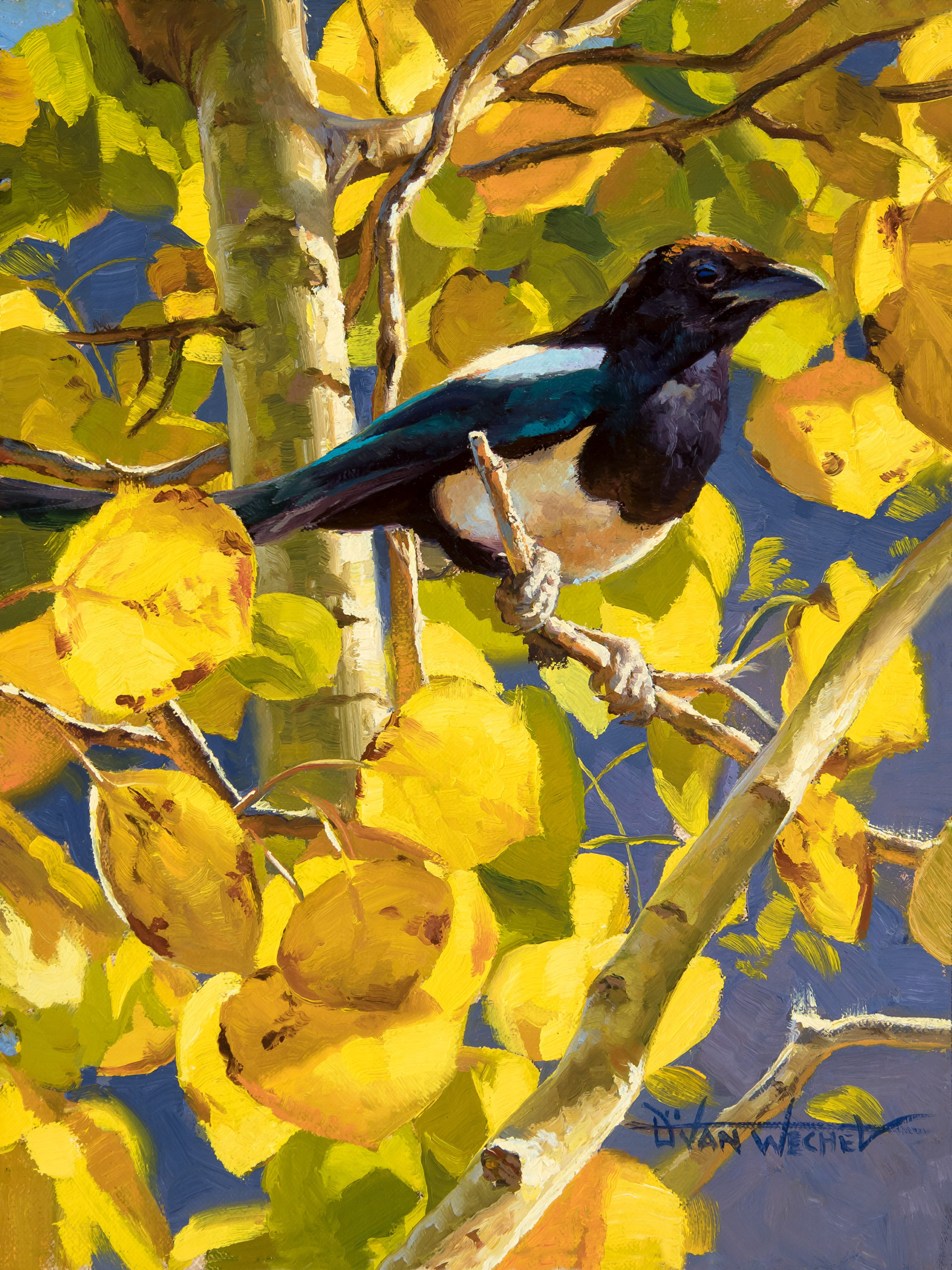
Connect with Dustin Van Wechel:
Website | Instagram
Related Article:


